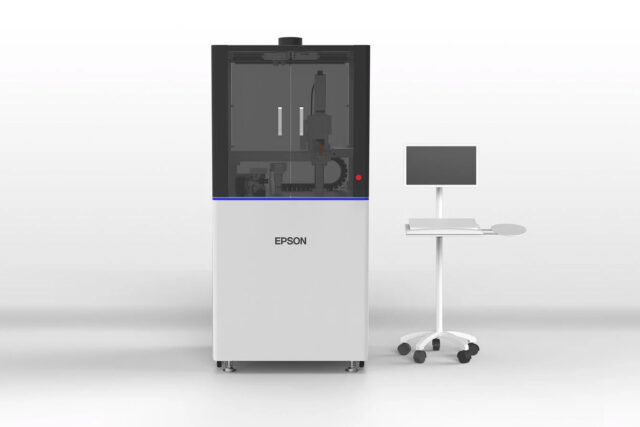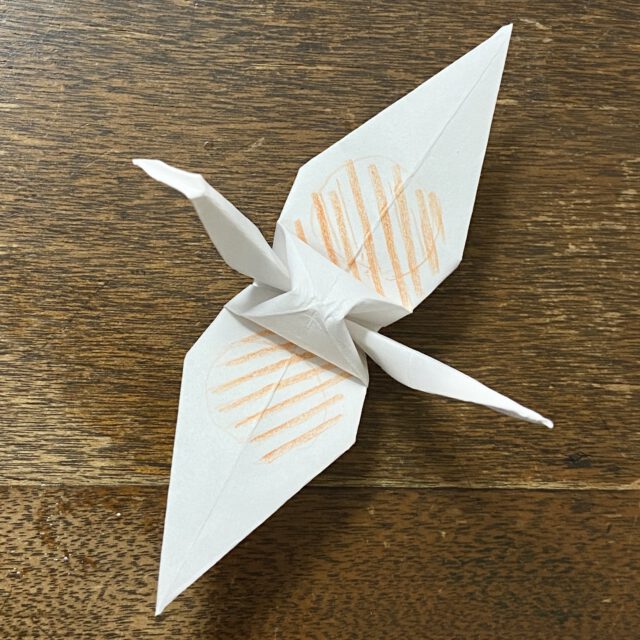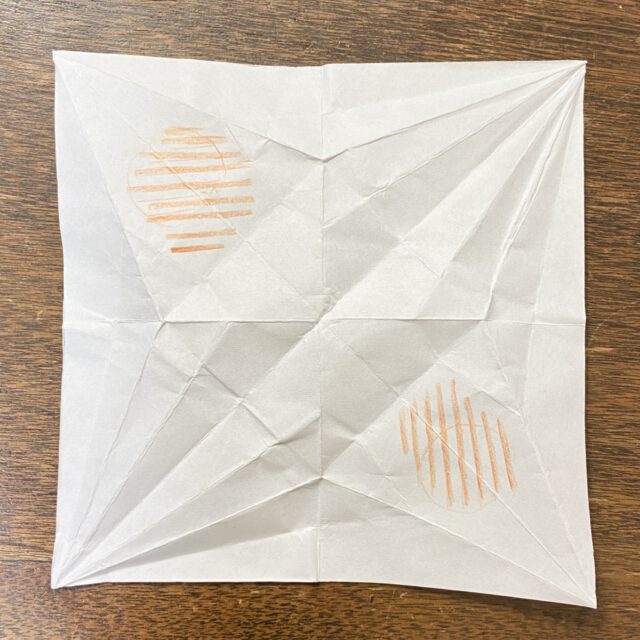[Inkjet Lab Vol.1] Let’s Make an Origami Crane Fly by Itself!
- This article is more than 2 years old since it was last updated. The content may be outdated.
Hi there! This is Tanaka, in charge of the Inkjet Lab where we will be making things using EPSON’s inkjet machine for R&D.
Belonging to the Crafts Department of Tokyo University of the Arts, metal is usually at the core of what I make, be it banging out copper plates or mixing alloys for jewelry. The working environment I was in really had nothing to do with inkjet printers, but the more I learned about the functions and possibilities of the EPSON inkjet machine for R&D, the more I grew curious as to just what I could possibly make with it.
As I’m no better than a novice when it comes to the inkjet machine for R&D, I will be relying on the support and counsel of our in-house engineer Mr Saito whenever a problem arises.
Now, just who actually knows what an inkjet machine for R&D is? As its name implies, it is a printer made by EPSON to be used for research and development purposes. Actually printing images with the ink or analyzing the discharge situation, the machine is really versatile.
My ambition is to use this inkjet machine for R&D not just for the conventional purposes of printing text or image onto paper but to develop new products and to revolutionize manufacturing processes, and I will be using this space to communicate not only on the progress of the experiment but also on how inkjet printing can be fun and inspiring.

An origami crane fly by itself
The first experiment will be to make an origami crane fly by itself.
I decided upon this project as I thought it’d be fun to see an origami crane flutter its wings and fly away.


So, how does it work?
Going with the image of the crane fluttering its wings up and down, orange lines representing the circuitry were drawn diagonally onto the base of the crane’s wings (as shown in the image).
The next question is; what power source shall we use? Heat, or electricity?
Should we use wires, insert a button cell inside the crane or make it rechargeable?
What materials shall we use?
For the paper, I intend to test a variety of materials and choose the best one. As for the ink used to print the circuitry, I have decided upon silver nano-ink that can be printed by inkjet. The ink contains silver particles that connect to become conductive. However, as the ink comes in a liquid form for inkjet printing, it seems like we’ll need to wait for the excess liquid to evaporate. I guess that’s how only the silver particles are left and the circuitry is printed. Having said that, there remain concerns over how paper tends to soak up liquids and isn’t exactly smooth…
Next time
In my next post, I would like to carry out an experiment to select the paper to be used for the printing.
I’m already looking forward to reporting back to you all!